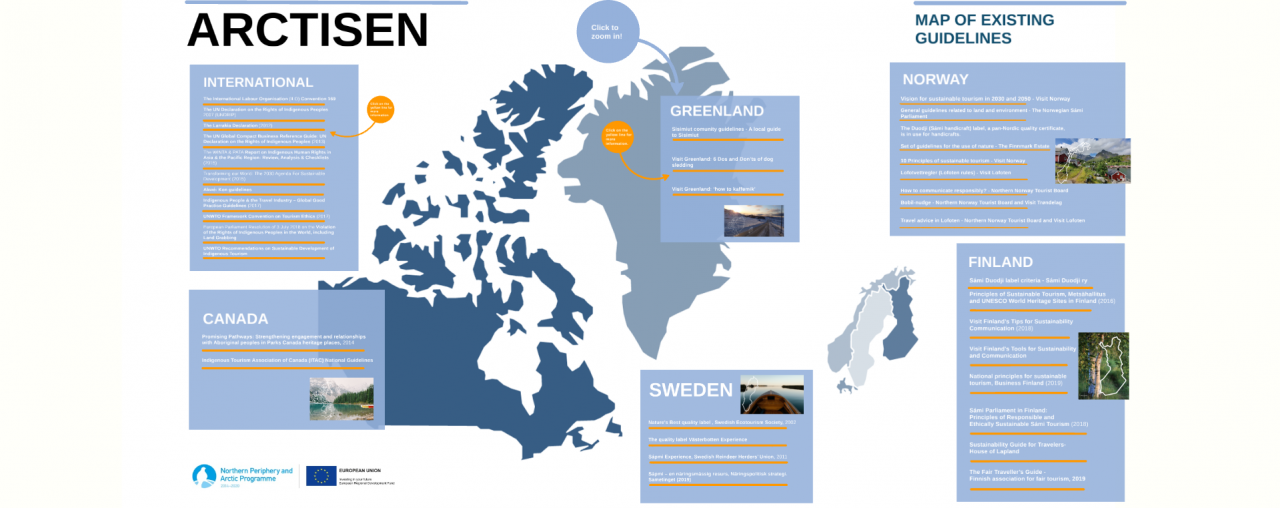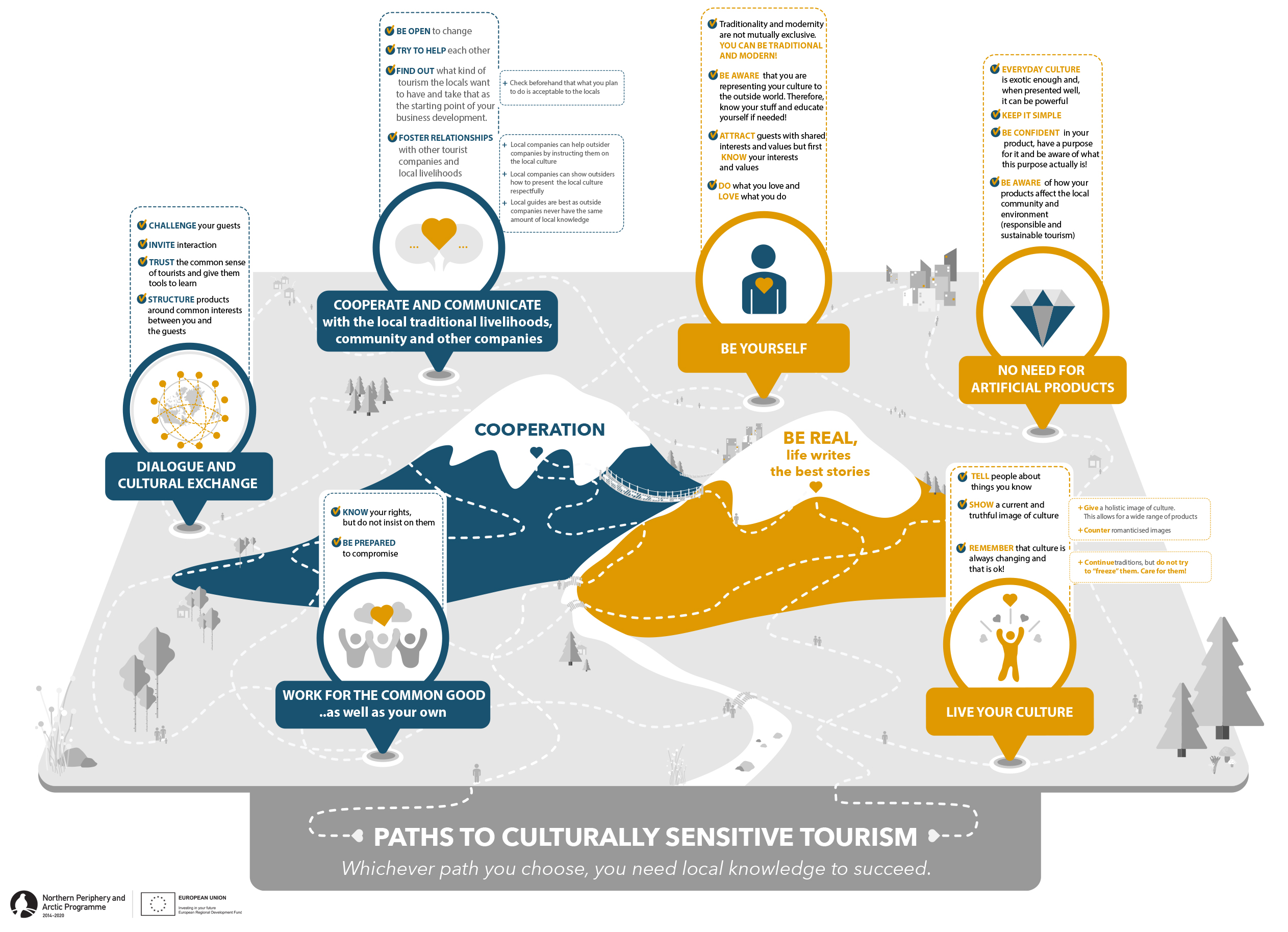Text: Kjell O. Olsen & Outi Kugapi
During the past year, different kinds of guidelines have been created to enhance sustainable and responsible tourism in the Arctic. ARCTISEN project has tracked down the existing guidelines, and gathered them to this map, designed by Suvi Autio.

Map of existing tourism guidelines in the Arctic. Click the image to visit the Prezi-presentation of the guidelines – created by Suvi Autio.
One of the originally planned activities in ARCTISEN project was co-create specific guidelines for culturally sensitive tourism. Common guidelines created by tourism start-ups, SMEs and other project participants were hoped to raise awareness and respect towards cultural diversity in the Arctic tourism context among tourism actors. During the preparatory phase of the ARCTISEN project, guidelines were seen as a tool that could improve business environments for the start-ups and SMEs and enhance mutual understanding and cooperation between them and larger companies in the project area.
Nevertheless, when the ARCTISEN team started to conduct interviews among different kinds of tourism actors in the Arctic in 2019, the initial plan of guidelines needed to be revisited. (You can read more about the base-line reports here.) For instance, the interviews in Finland and Norway indicated that tourism companies were either not aware of existing guidelines, or did not see them highly relevant to their individual businesses. In Sweden, the companies rather emphasized the need for dialog, communication and public leadership, instead of guidelines. Also in Greenland, few of the small companies seemed to be eager to promote the idea of making new guidelines for cultural awareness.
Interesting differences
The interviews revealed interesting differences in people’s opinions toward guidelines. First of all, there is a difference between places with relatively many and those with relatively few tourists. When tourism is moderate, and entrepreneurs themselves are part of a local community, tourism actors appear to know how to handle cultural sensitivity. There seems to be no need for somebody to tell them how to act. Therefore, they are reluctant to develop guidelines for the sector. In contrast, in tourist hubs the idea of guidelines is more frequently discussed. Guidelines could make it easier to operate, in particular for those who are not part of Indigenous or local communities – such as national tourist companies.
Secondly, institutions and DMOs are more eager to propose guidelines based on the prospect of a growth in tourism. For them it seems to be a principle of being prepared for what potentially might come, while entrepreneurs themselves seems to have a shorter horizon on this issue. Finally, in Finland and Norway we found that the younger generations seem to be more positive towards guidelines then the older generation.
What does this tell us?
First of all, that the majority of companies interviewed in the Arctisen project are firmly embedded in their local communities, and therefore get their ‘guidelines’ for cultural sensitivity through their everyday interaction with local community. This kind of base of the local companies probably can make overarching guidelines to become a nuisance as the general guidelines never will fit with the more fine-grained moral knowledge of the local entrepreneurs themselves. This is not to say that local knowledge always will guarantee that tourism not will cause conflicts and will be conducted in a way that local communities find proper. Rather, it is to say that a local foundation for tourism companies makes them a part of the ongoing life in local communities, with its own conflicts but also with local traditions for solving them.
Last, but not least, our experience serves as a good example about the need to revisit and modify project plans along the way.
Paths to culturally sensitive tourism business
Based on the discoveries throughout the project lifetime and the difficulty of creating common guidelines, we decided to create a roadmap “Paths to culturally sensitive tourism business” which shows how tourism can be done in culturally sensitive way. Due to pandemic, the guidelines have been created based on the videos made for our online course and also based on the national reports produced during the project.
To see texts better, please click the picture and use zoom tool. The picture is also printable.
Roadmap illustaration: Emmanuel Tauch, Outi Kugapi, Monika Lüthje and Elisa Hartikainen

